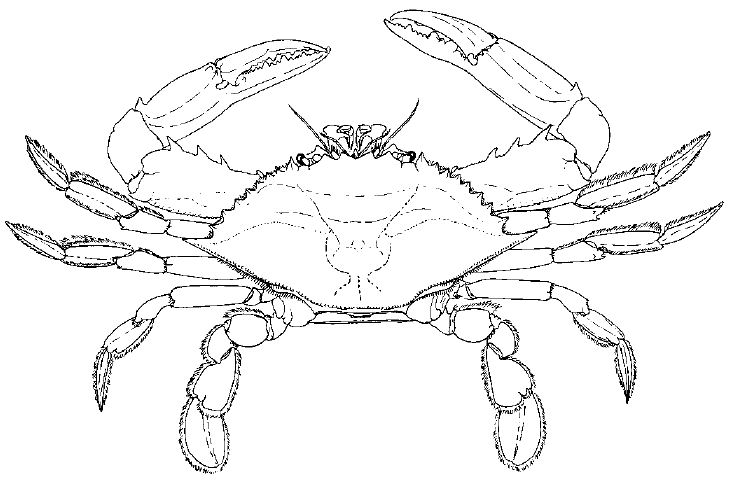“Sea Creatures in your Neighborhood” – the Blue Crab
Who’s up for a little marine-inspired scavenger hunt? Get ready for NJSGC’s “Sea Creatures in your Neighborhood” campaign! Here’s the plan.
- Draw and color a picture of NJSGC’s “animal of the week” (more information below).
- Include a “fun fact” about this creature.
- Hang your masterpiece in a front window, door, or yard. Snap a photo to post on social media with the hashtags #SeaCreaturesInYourNeighborhood, #NJSGC, and #SeaGrantSTEM. Be sure to include the name of your city or town Feel free to send photos directly to NJSGC by contacting our Communications Specialist.
- On your next ride or walk around the neighborhood (while respecting the rules of social distancing), take pictures of any #SeaCreaturesInYourNeighborhood you notice. Or search and discover more virtually.
- Encourage friends and family to do the same and be sure to share your findings with us!
- Stay tuned for next week’s ”animal of the week” and repeat. Stay safe and have fun while learning about our favorite sea creatures found along the Jersey Shore!
- NJSGC will “spotlight” all submissions throughout Spring 2020.
Visit our “Sea Creatures in your Neighborhood” webpage to learn more.
__________________________
Week 6 (May 1, 2020)
The Blue Claw Crab (Callinectes sapidus) – please use this template for guidance.
“Spring is a time that many land animals emerge from hibernation, and there are some similarities in the ocean. Although most marine organisms do not hibernate specifically, some (like the blue claw crab) spend the colder months buried in the ocean bottom in a dormant state. As the duration of sunlight increases and water temperatures rise in May, hungry blue crabs will emerge and swim to shallow bays and estuaries. Crabs are ambush predators and once close to shore they will lie in wait for their prey to swim or amble by. Eating clams, fishes, and other crabs cause these invertebrates to fatten and eventually molt as they outgrow their shells. It takes a few hours for the new shell to harden, and while it is “soft shell” a crab is vulnerable to predators. Therefore, blue crabs will once again bury themselves into the sandy shallow bottom until their shells can protect them.”
Did you know…
– By looking at the abdomen, you can tell the gender of a crab: males are shaped like a golf tee, while females are shaped either like a triangle (immature) or rounded (mature). The large claws on mature females also have red tips.
– Although crabs spawn in the fall, females do not lay eggs until the spring, and they can lay up to 8 million at a time!
– Male blue crabs can live up to 3 years while females only live up to 2 years.
– Blue crabs feed by catching prey with their large claws and ripping their food apart to pass into their mouths.
Check out these cool videos!
